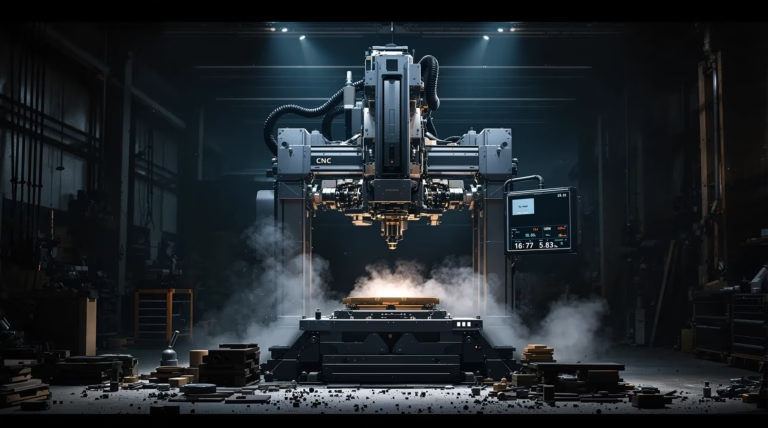Industrial Internet of Things: Transforming Industries with IIoT
The Industrial Internet of Things (IIoT) is revolutionizing modern manufacturing and industrial operations through advanced connectivity and data analytics. This comprehensive guide explores how IIoT transforms traditional industrial processes into intelligent, data-driven systems that drive efficiency and innovation.
Understanding the Industrial Internet of Things (IIoT)
The Industrial Internet of Things (IIoT) represents a specialized application of IoT technology within manufacturing, energy, transportation, and other industrial sectors. Unlike consumer-focused IoT, IIoT creates an ecosystem where machines, devices, sensors, and applications work together to collect, monitor, and analyze data from industrial operations. This integrated network leverages machine-to-machine (M2M) communication to transform traditional industrial processes into smart, data-driven systems.
At its core, IIoT combines operational technology (OT) with information technology (IT), creating a bridge between physical industrial equipment and digital analytics platforms. This convergence enables manufacturers and industrial operators to extract valuable insights from previously isolated machinery and processes, driving enhanced efficiency, productivity, and reliability across entire operations.
What is IIoT and How Does it Work?
The Industrial Internet of Things functions as a multi-layered technology stack designed specifically for industrial environments. The system operates through several distinct layers:
- Physical Layer – Sensors capture operational data including temperature, pressure, vibration, and energy consumption
- Gateway Layer – Edge computing systems collect, filter, and process raw data
- Network Layer – Communication protocols ensure reliable data transmission
- Analytics Layer – Cloud platforms process data using machine learning and AI
- Visualization Layer – Dashboards present actionable insights to operators
Key Components of IIoT
| Component | Function |
|---|---|
| Smart Sensors & Actuators | Collect data and execute commands from physical equipment |
| Edge Computing Devices | Provide local processing and real-time decision-making |
| Gateway Devices | Enable secure connectivity between OT and IT networks |
| Cloud Computing Platforms | Offer scalable storage and specialized analytics services |
| Digital Twin Technology | Create virtual replicas for simulation and optimization |
Benefits of Implementing IIoT in Industries
The Industrial Internet of Things (IIoT) is revolutionizing industrial sectors by creating an interconnected ecosystem where machines, sensors, and systems collaborate in real-time. This digital transformation generates significant value through the collection, analysis, and implementation of data-driven insights across the entire operational landscape.
Enhancing Operational Efficiency
- Real-time monitoring and analysis of industrial processes
- Identification of production bottlenecks
- Reduction in unplanned downtime
- Optimization of workflow patterns
- Advanced process automation capabilities
- Automatic quality issue detection
- Improved material requirement management
Cost Reduction and Increased Productivity
IIoT implementation delivers substantial cost reductions across multiple dimensions of industrial operations. Smart sensors monitor and optimize energy consumption patterns, automatically adjusting systems to eliminate waste and generate significant savings. The system’s predictive maintenance capabilities dramatically reduce costly unplanned downtime by identifying potential equipment failures before they occur, while simultaneously extending machinery lifespan and minimizing emergency repair expenses.
- Optimized energy consumption through automated monitoring
- Reduced maintenance costs through predictive analytics
- Lower inventory carrying costs with precise management
- Minimized production interruptions from stockouts
- Decreased emergency repair expenses
- Extended equipment lifespan
The productivity gains from IIoT adoption create lasting competitive advantages. Connected workers equipped with real-time data make better decisions and accomplish tasks more efficiently. Production lines achieve higher throughput as automated systems maintain optimal operating conditions and quickly address emerging issues. The cross-functional collaboration enabled by shared IIoT platforms breaks down operational silos, allowing teams to coordinate activities more effectively. These improvements compound over time as organizations leverage accumulated data to continuously refine processes.
Key Use Cases of IIoT
The Industrial Internet of Things (IIoT) transforms traditional industrial operations through interconnected networks of devices, sensors, and machines. These systems enable real-time data collection and analysis that drives operational intelligence across manufacturing, energy, transportation, and healthcare industries. IIoT applications leverage machine-to-machine (M2M) communication, big data analytics, and artificial intelligence to enhance industrial processes and deliver measurable returns on investment.
Predictive Maintenance and Its Impact
| Benefit | Impact |
|---|---|
| Equipment Downtime | 30-50% reduction |
| Machinery Lifespan | 10-40% extension |
| Maintenance Costs | Significant decrease |
| Workplace Safety | Enhanced through reduced failures |
Predictive maintenance uses real-time sensor data to monitor equipment health continuously. Advanced analytics algorithms process vibration patterns, temperature fluctuations, power consumption, and other parameters to detect subtle changes that indicate potential failures. This proactive approach enables planned interventions, optimizes spare parts inventory, and creates valuable equipment performance histories for future decision-making.
Asset Condition Monitoring for Better Performance
Asset condition monitoring provides comprehensive oversight of industrial equipment throughout its operational lifecycle. Sophisticated sensor networks capture multidimensional data on asset performance, environmental conditions, and operational parameters. This real-time visibility enables operators to maintain equipment at optimal efficiency levels while preventing degradation that could affect product quality or energy consumption.
- Improved energy efficiency through automatic system optimization
- Enhanced product quality consistency
- Increased equipment capacity utilization
- More effective capital planning based on actual condition data
- Transformation of maintenance into a strategic function
Predictive Quality Analytics in Manufacturing
Predictive quality analytics revolutionizes manufacturing quality control by anticipating and preventing defects before they occur. Advanced AI algorithms analyze comprehensive data across the manufacturing process, from raw material properties to operator actions, identifying patterns that affect product quality. This approach enables manufacturers to address root causes rather than symptoms, leading to near six-sigma quality levels and substantial reductions in material waste and rework costs.
The system creates closed-loop feedback mechanisms that continuously refine manufacturing processes based on real-world performance and user experience. This integration of customer feedback, market trends, and internal operations accelerates new product introductions and ensures consistent product quality across production lines.
Challenges and Considerations in IIoT Adoption
Implementing Industrial Internet of Things systems presents significant challenges as organizations navigate digital transformation while managing security risks in connected environments. The transition requires strategic planning to optimize operations while maintaining worker safety and product quality. Industrial enterprises face complex decisions regarding the replacement of analog systems with digital alternatives, establishing secure networks, and developing applications that convert raw data into actionable insights.
- Integration of legacy systems with modern infrastructure
- Addressing cybersecurity vulnerabilities
- Managing device manufacturer and end-user responsibilities
- Developing scalable frameworks for future technologies
- Ensuring seamless connectivity across platforms
Cybersecurity Concerns and Solutions
| Security Challenge | Solution Approach |
|---|---|
| OT/IT Convergence | Zero-trust security model implementation |
| System Access | Continuous verification and authentication |
| Network Protection | Segmentation and encrypted communications |
| Threat Detection | Continuous monitoring and anomaly detection |
The integration of operational technology (OT) with information technology (IT) creates unique security challenges. While traditional systems relied on physical isolation, IIoT connectivity requires comprehensive protection against cyber threats that could impact production, quality, and worker safety. Organizations implement multi-layered security strategies, incorporating security-by-design principles from sensors to cloud platforms.
Ensuring Reliable Network Connectivity
Network infrastructure reliability is crucial for IIoT implementations, supporting time-sensitive applications and real-time data transmission. IT departments must ensure sufficient bandwidth capacity while maintaining low latency connections to processing centers.
- Industrial Ethernet for deterministic communications
- 5G networks enabling mobility and high bandwidth
- Ultra-reliable low latency communication (URLLC) capabilities
- Scalable infrastructure supporting future expansion
- Environmental condition considerations
Role of AWS IoT in Industrial Applications
AWS IoT serves as a comprehensive platform for Industrial Internet of Things implementations across various sectors. The platform bridges OT and IT environments, enabling intelligent, networked industrial assets while providing secure device communication, scalable storage, and advanced analytics capabilities.
How AWS IoT Supports IIoT Solutions
- Secure bidirectional communication through IoT Core
- Comprehensive device management and monitoring
- Specialized time-series data processing
- Automated data cleansing and transformation
- Streamlined application development tools
- Purpose-built industrial analytics capabilities
The platform excels in managing massive industrial data volumes through specialized database solutions and analytics tools. AWS IoT’s end-to-end approach enables organizations to focus on value extraction rather than infrastructure management, accelerating innovation in predictive maintenance and quality optimization initiatives.
Case Studies: Success Stories with AWS IoT
Volkswagen Group’s Industrial Cloud Initiative
- Implementation across 124 global factories
- Real-time data collection from machinery and production systems
- 30% reduction in vehicle production time in select facilities
- Processing over 2,000 data points per second per production line
- Standardized data platform enabling rapid innovation scaling between facilities
Honeywell’s Forge Platform Transformation
| Feature | Impact |
|---|---|
| Building Management Systems | Connected millions of sensors and controllers |
| Energy Optimization | 23% average energy savings |
| Deployment Time | Reduced from months to weeks |
| Analytics Capability | Real-time performance monitoring and adjustment |
Honeywell’s implementation leverages AWS’s robust computing infrastructure to analyze occupancy patterns, equipment performance, and environmental conditions. The platform’s machine learning algorithms automatically adjust building operations for maximum efficiency, demonstrating how AWS IoT enables industrial organizations to transform operational data into strategic business value through comprehensive, scalable cloud solutions.







